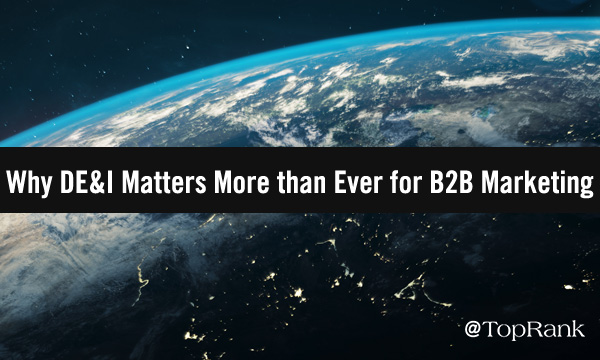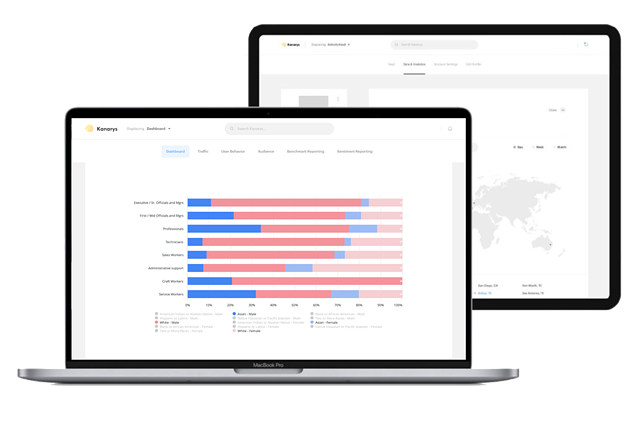Why Diversity, Equity & Inclusion Matter More than Ever for B2B Marketing

By Joshua Nite

The team at TopRank Marketing asked me to write a blog post on Diversity, Equity and Inclusion in B2B Marketing.
Every introduction I wrote rang hollow. I talked about how representation matters, including a post with an adorable kid overjoyed at seeing himself onscreen in Encanto. I tried starting with a statistic about brand values.
I tried starting with a question: What is a cis straight white guy doing writing a post about diversity, equity and inclusion?
The idea was to follow up that rhetorical question with a post that would justify its own existence.
But it turns out that question isn’t rhetorical at all: It demands an answer. And I don’t have a good one.
So instead of me lecturing about how representation matters, I’m going to put it into practice. I’m dedicating the rest of this post to amplifying other voices.
Diversity Is a Business Imperative: Christy Haubegger, EVP, Chief Enterprise Inclusion Officer at Warner Media

The truth is, the reason that people should want to have a more inclusive workforce is because they want to win. Not because they want to ‘do the right thing,’ but because they want to win.
And inclusion is actually how you win. And there’s a few reasons for that. One is the diversity of perspectives and viewpoints that drives innovation. You need new inputs to get new outputs.
And, frankly, the bigger opportunity is by introducing new voices and new perspectives, it catalyzes different thinking even among the people who are already in that room.
It also prevents the downside of blind spots. If everyone in the room is the same, they have the same perspective. You often have blind spots that the group can’t see. And by having other perspectives in the room, and ideally a complimentary set of blind spots, collectively, you can see everything.
It allows you to see what’s coming and allows you to to understand what the consumer is doing. It allows you to look around corners and see what’s next.
Having different viewpoints around the table who may not agree with you is a challenge to your comfort. But I want to win a lot more than I want to be comfortable.
Watch Christy’s episode of Anne Chow’s Champions for Change.
Eliminate Cultural Bias to Drive Success: Kevin L. Jackson, CISSP, CSSP

A defining characteristic of digital transformation success is a diverse digital culture. This cultural approach maximizes human capital. It also leverages that strength to maintain current customers through the change while simultaneously discovering ways to gain more customers.
Tightly coupling the …read more
Source:: Top Rank Blog







